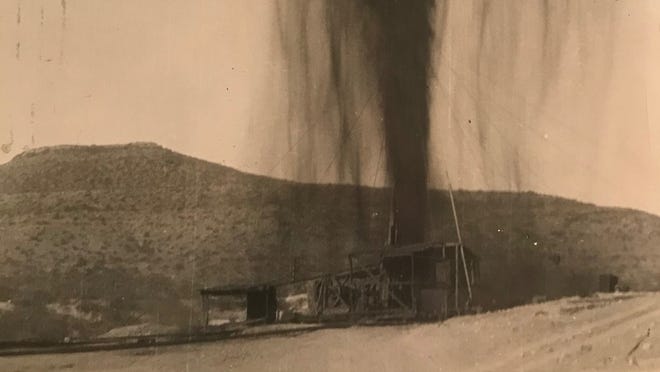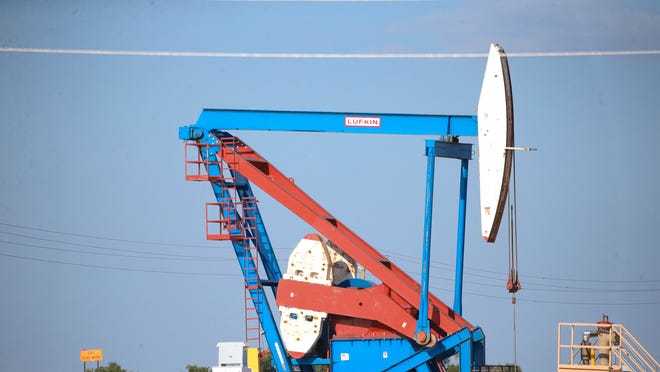Protests accepted for lease sale of New Mexico public land to oil and gas industry
 Adrian Hedden
Adrian Hedden
Anyone opposed to the sale of federal land in southeast New Mexico to the oil and gas industry has about 10 days to make their voices heard regarding a lease sale scheduled for November.
The federal Bureau of Land Management began a protest period for a sale scheduled for Nov. 7 of 10-year leases on public land to companies to drill for the exploration or extraction of oil and gas.
Public comments can be made online at the BLM's website.
The BLM proposed 16 parcels on 7,619 acres om Eddy, Lea and Sandoval counties in New Mexico and Dewey and Woodward counties in Oklahoma.
Support local journalism. Subscribe to the Carlsbad Current-Argus.
Protests of these parcels will be accepted from Sept. 9 to 20.
In Eddy County, BLM proposed five parcels for lease on 2,492 acres.
Five parcels in Lea County were also offered, for a total of 921 acres.
In Sandoval County, 2,837 acres were offered for a lease on four parcels of land.
More:Protesters call for drilling ban following federal land sales to oil and gas industry
New Mexico activists and Native American leaders recently called for a ban on oil and gas drilling while the federal government reviews the practice’s impact on the environment and its contributions to climate change.

A one-year moratorium was ultimately placed on the Greater Chaco region in northwestern New Mexico, which groups contended contained acres of sacred land.
Carol Davis, coordinator at Dine C.A.R.E, a Native American activist group, said the BLM’s Rio Puerco Office, which manages lands in Sandoval County in northern New Mexico should listen to public concerns and cease drilling permits in the region.
“BLM continues to fail the public by not upholding the duties they are charged with by allowing unchecked development despite public concerns routinely raised about adverse cumulative public health and environmental impacts,” she said. “We demand accountability from the Rio Puerco Field Office of the BLM."
More:Oil and gas industry predicts billions in investments in New Mexico through 2030
In the southeast and booming Permian Basin, environmentalists worried such activity on public land could be contributing to pollution.
A study from Oil Change International said the Permian Basin in southeast New Mexico and West Texas – containing Eddy and Lea counties – could be the source of nearly 40 percent of emissions of methane and other volatile organic compounds across the country by 2050.

“Continued oil and gas drilling throughout the Greater Chaco and Greater Carlsbad landscape has already caused irreparable harm to our environment, air and water quality, and public health,” said Miya King-Flahery, organizer at the Sierra Club Rio Grande Chapter. “New Mexico cannot escape from the climate crisis or its impacts unless we take action today.
More:Does fracking cause earthquakes? Studies show link to oil and gas waste water wells
“Until we reduce our reliance on fossil fuels and make the necessary changes now, we will experience harsher drought seasons and more extreme climate fluctuations. New Mexico and our future generations deserve better.”
Oil prices climb, still threatened by global volatility
The price for domestic oil grew to about $58 per barrel as of Tuesday, recovering slightly from a dip to $54 at the start of September, per data from NASDAQ.
But the price of West Texas Intermediate (WTI) – a grade of crude oil used as a benchmark for domestic pricing – was likely to continue the dramatic fluctuation that defined August, per a report from Drillinginfo.
More:Oil and gas industry, environmentalists debate federal, state methane laws
Last month started at $54 per barrels, dropped to $51 per barrel in the first weeks of the month, but shot up to just barely above $57 per barrel by mid-August.
It continued to rise and drop between about $54 and $57 per barrel on an almost weekly basis until September.
In the first 10 days of the month, WTI traded at $54, then $56 and up to Tuesday’s rate of $58.50.
More:Waste to Water: 4 lessons learned from our national tour of oil and gas operations
The report warned the market could continue to face dramatic price shifts as a the U.S. and China – the world’s two biggest economies – continue a trade war with each threatening tariffs on each other.
“The WTI market opened the week falling on its face, as traders felt the impact of the US imposing 15% tariffs on some Chinese products and China placing new duties on US crude,” read the Drillinginfo report.
“Adding to this negativity was the US manufacturing data, which showed activity declining in August for the first time in three years.”
More:U.S. Sen. Tom Udall mounts opposition to EPA's cuts to oil and gas methane rules
The U.S. and China agreed to a face-to-face meeting in October, which could restore some market confidence, but without any major changes, the report expected prices to continue its volatile nature between $53 and $58 for the foreseeable future.
“The longer the market stays in this tight range, the more likely significant volatility will occur when it breaks out of the range, either up or down,” the report read.
Adrian Hedden can be reached at 575-628-5516, achedden@currentargus.com or @AdrianHedden on Twitter.